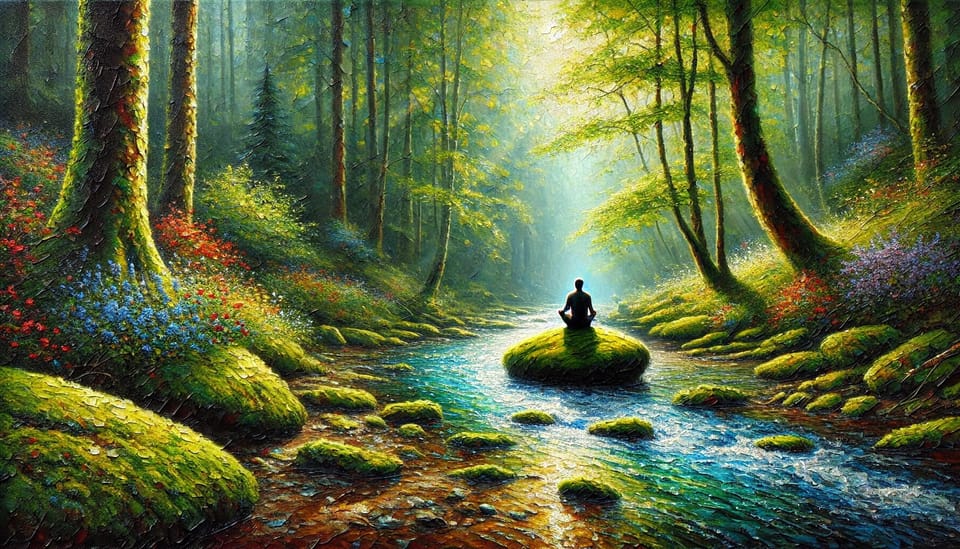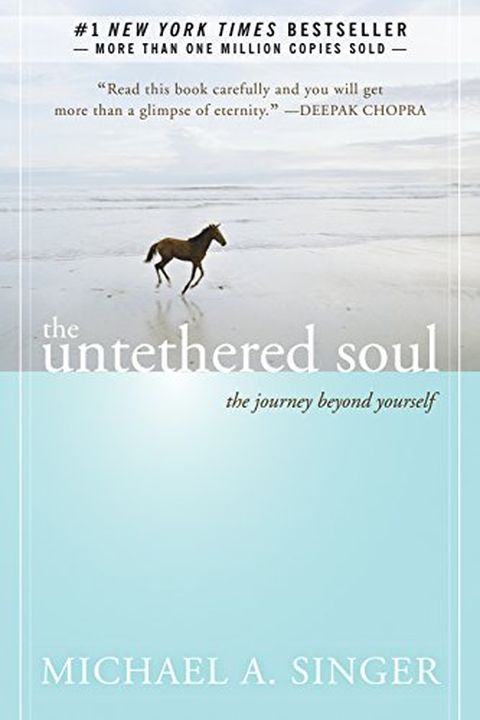Mindfulness: The Key to Living Fully

We all want to live fully—to experience life in all its richness and beauty. But there’s always something in the way. Some point to responsibilities or the constant chaos of life. Others recognize their own unresolved issues but feel paralyzed by fear or exhaustion. Some choose to blame luck or fate. Then there are those who manage to push past all that, choosing to face all the discomfort if it means getting to a better place.
For most of my life, I’ve been known as an extroverted optimist. I love people, the energy of being in vibrant social settings. But even in the liveliest moments, there’s often this subtle, frustrating barrier—a sense of not fully being there. It's like watching a sunset through a fogged window – I see the colors, sense the beauty, but can't feel the warmth on my skin or smell the evening air. The world is right there, yet somehow just out of reach.
It’s not just social settings, either. This detachment follows me even in nature, where I claim to feel most alive. When I’m out there, I’ll have brief moments where everything aligns—when I feel completely present, part of the landscape itself—but they’re fleeting. Most of the time, I’m just… there. Not fully present, as if I’m pressing my hands against glass, yearning to touch something I can’t quite grasp.
It’s like watching a live concert through a phone screen. You see the lights, hear the music, and feel some of the energy. But when you’re actually there the bass vibrates in your chest, the crowd’s energy pulls you in, and every moment feels electric. Living with this “film” between me and the world feels like I’m stuck watching the concert on a tiny screen, knowing full well how alive it could be if I were actually there.
And I know this because I’ve had some rare, profound experiences where that barrier dissolves. It felt like I woke up and for the first time, I felt truly alive, where I was like this is it, this is real life, this is what it's supposed to feel like. Everything else before that felt like a 2D video game on an old console—flat, muted, almost lifeless. Once I've tasted these vivid and real moments, it’s impossible to settle for less.
Naturally, the question becomes: how do you get there more consistently? How do you peel away the layers that separate you from fully being in life? Where do you even start when there are so many systems, frameworks, and psychological modalities out there? It’s overwhelming to even try to engage. What’s true? What’s not? And which of the ten million contradicting approaches do you even follow?
For me, the answer has been surprisingly simple: Mindfulness! The ability to fully engage with the present moment without judgment. That’s it. It works deep, right at the foundation of how we experience life. It doesn’t require logic and rational analysis—which is just so unintuitive for a nerd like me. But that’s the beauty of it. You can practice it anywhere, anytime.
The practice boils down to two things:
- Be aware: Notice your thoughts, emotions, bodily sensations, and environment—without getting caught up in the stories your mind layers on top of them.
- Be non-judgmental / equanimous: Accept what you observe without resistance, without trying to change, suppress or cling to it. Fully allow what arises to exist without holding on or pushing it away.
Describing mindfulness is like trying to explain love. You can say it’s a feeling of deep affection, but that barely scratches the surface of what it’s like to actually be in love. Mindfulness is kind of the same, that’s why it’s so hard to "sell" it. Until you’ve practiced it and felt the shifts, it just sounds like another self-help cliché.
When you practice mindfulness, you’re retraining your entire mind, body, and nervous system to engage with life in a new way. The first step is awareness: this sharp, clear noticing of your thoughts, emotions, and sensations. It’s like flipping on a light switch in a dim room. You start to realize just how much of your life has been running on autopilot, driven by habits and patterns you didn’t even know were there. For the first time, you create a pause—a moment of stillness where you can actually see what’s happening beneath the surface.
As you observe without judgment, you stop clinging to the highs and fighting the lows. Emotions and experiences flow naturally, like waves rising and falling. That resistance, the constant effort to control or avoid, begins to fade. What’s left is space—room to breathe, to feel, to exist without being overwhelmed. Over time, your nervous system adapts. The fight-or-flight mode calms down, and you find yourself more grounded, more present. Life stops feeling like it’s happening to you. Instead, you’re in it, choosing your path moment by moment.
And then, at some point you're like WOW. You feel completely reset, like you’re starting from scratch. The old patterns and identities aren't driving you anymore. You realize you can be whoever you want, do whatever you want. The filters are gone, and what’s left is pure, unfiltered life. For the first time, you’re not just surviving—you’re fully alive.
For me, at this point, these realizations are still just momentary—they come and go. They don’t stay with me all the time, and I mostly slip back into old patterns. But that’s part of the journey. The goal is to continue the practice to have these moments more and more, to stretch them out, until eventually, I’m always there—living in that raw, unfiltered reality, fully awake, fully alive.
The most unintuitive part for me—someone used to fixing everything through logic—has been realizing that mindfulness doesn’t deal with traumas, psychological blocks, or barriers at an intellectual level. It doesn’t ask you to dig into your past, dissect your childhood, or untangle every knot in your psyche. Instead, it works beneath all that. The practice gradually melts those things away, like ice dissolving under the sun.
This simplicity feels radical in a world that equates complexity with progress. Our culture prizes adding more—more techniques, more theories, more frameworks. Even people seem to get more credibility the more complex they appear. Mindfulness flips that entirely. It’s about stripping away the excess, and focusing on the essence of what it means to be alive.
A lot of people dismiss mindfulness, saying, “I can’t focus,” or “My mind doesn’t work like that.” But the harder it is, the more you have to gain from it. Saying, “I don’t meditate because I can’t focus,” is like saying, “I don’t go to the gym because I’m out of shape.” You don’t start with focus—you build it. Meditation is the training. Many people with ADHD, for example, become excellent meditators and gain the most from it. It’s not easy for anyone at first—that’s the point. It’s a skill you develop over time. You don’t have to believe in it upfront. Just practice, experience it, and see the results for yourself.
I’ve also heard people say these things feel too self-centered, but that couldn’t be further from the truth. This isn't just about you. Presence makes us more compassionate and attuned to our interconnectedness. It’s not about retreating inward, instead it's about showing up more fully for the people around us, with empathy and an open heart.
Psychology has gone through so many stages. Early on, psychoanalysis focused on digging into the past and uncovering hidden memories. Then behaviorism emphasized conditioning and observable actions somewhat ignoring the internal world. Later, cognitive psychology shifted the focus to the thought patterns. And now we’re at this fascinating point where psychology, spirituality, and even religion are converging on a shared understanding: mindfulness is where it’s at. It isn’t just another tool; it’s the foundation of a rich, connected life.
You see it everywhere: in therapies like EMDR, Somatic Experiencing, Acceptance and Commitment Therapy, Mindfulness-Based Cognitive Therapy, Dialectical Behavior Therapy in spiritual practices like Zen and Vipassana, and even in Christian contemplative prayer. Yoga, Sufi meditation, and Taoist traditions are based on the same principle: be present, observe without resistance, and connect with reality as it is. Across cultures and philosophies, this practice emerges as a universal truth.
As Rumi said, "Your task is not to seek for love, but merely to seek and find all the barriers within yourself that you have built against it." Mindfulness is my way of dismantling those barriers—each step peels back another layer of separation, bringing me closer to that raw, vivid experience of being truly alive.
P. S. There are so many books on this, and I feel like it's very individual who connects with which book, but I'll give you some to consider.
Introduction Level


Practice Level



A couple of my other relevant posts on this – here and here.

Member discussion